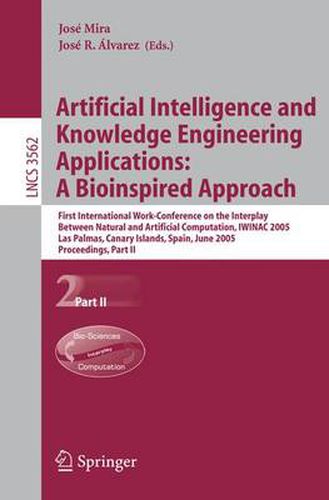Readings Newsletter
Become a Readings Member to make your shopping experience even easier.
Sign in or sign up for free!
You’re not far away from qualifying for FREE standard shipping within Australia
You’ve qualified for FREE standard shipping within Australia
The cart is loading…






This title is printed to order. This book may have been self-published. If so, we cannot guarantee the quality of the content. In the main most books will have gone through the editing process however some may not. We therefore suggest that you be aware of this before ordering this book. If in doubt check either the author or publisher’s details as we are unable to accept any returns unless they are faulty. Please contact us if you have any questions.
The computational paradigm considered here is a conceptual, theoretical and formal framework situated above machines and living creatures (two instant- tions), su?ciently solid, and still non-exclusive, that allows us: 1. tohelpneuroscientiststoformulateintentions,questions,experiments,me- ods and explanation mechanisms assuming that neural circuits are the p- chological support of calculus; 2. to help scientists and engineers from the ?elds of arti?cial intelligence (AI) and knowledge engineering (KE) to model, formalize and program the c- putable part of human knowledge; 3. to establish an interaction framework between natural system computation (NSC) and arti?cial system computation (ASC) in both directions, from ASC to NSC (in computational neuroscience), and from NSC to ASC (in bioinspired computation). With these global purposes, we organized IWINAC 2005, the 1st International Work Conference on the Interplay Between Natural and Arti?cial Computation, whichtookplaceinLasPalmasdeGranCanaria,CanaryIslands(Spain),during June 15-18, 2005, trying to contribute to both directions of the interplay: I: From Arti?cial to Natural Computation. What can computation, arti?cial intelligence (AI) and knowledge engineering (KE) contribute to the und- standing of the nervous system, cognitive processes and social behavior? This is the scope of computational neuroscience and cognition, which uses the computational paradigm to model and improve our understanding of natural science.
$9.00 standard shipping within Australia
FREE standard shipping within Australia for orders over $100.00
Express & International shipping calculated at checkout
This title is printed to order. This book may have been self-published. If so, we cannot guarantee the quality of the content. In the main most books will have gone through the editing process however some may not. We therefore suggest that you be aware of this before ordering this book. If in doubt check either the author or publisher’s details as we are unable to accept any returns unless they are faulty. Please contact us if you have any questions.
The computational paradigm considered here is a conceptual, theoretical and formal framework situated above machines and living creatures (two instant- tions), su?ciently solid, and still non-exclusive, that allows us: 1. tohelpneuroscientiststoformulateintentions,questions,experiments,me- ods and explanation mechanisms assuming that neural circuits are the p- chological support of calculus; 2. to help scientists and engineers from the ?elds of arti?cial intelligence (AI) and knowledge engineering (KE) to model, formalize and program the c- putable part of human knowledge; 3. to establish an interaction framework between natural system computation (NSC) and arti?cial system computation (ASC) in both directions, from ASC to NSC (in computational neuroscience), and from NSC to ASC (in bioinspired computation). With these global purposes, we organized IWINAC 2005, the 1st International Work Conference on the Interplay Between Natural and Arti?cial Computation, whichtookplaceinLasPalmasdeGranCanaria,CanaryIslands(Spain),during June 15-18, 2005, trying to contribute to both directions of the interplay: I: From Arti?cial to Natural Computation. What can computation, arti?cial intelligence (AI) and knowledge engineering (KE) contribute to the und- standing of the nervous system, cognitive processes and social behavior? This is the scope of computational neuroscience and cognition, which uses the computational paradigm to model and improve our understanding of natural science.